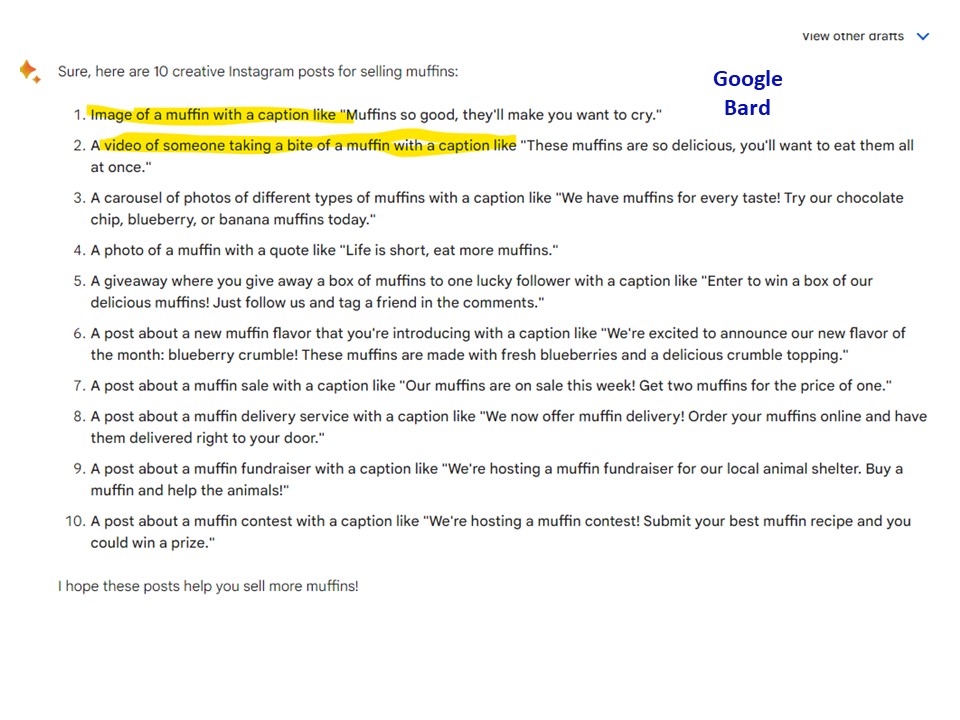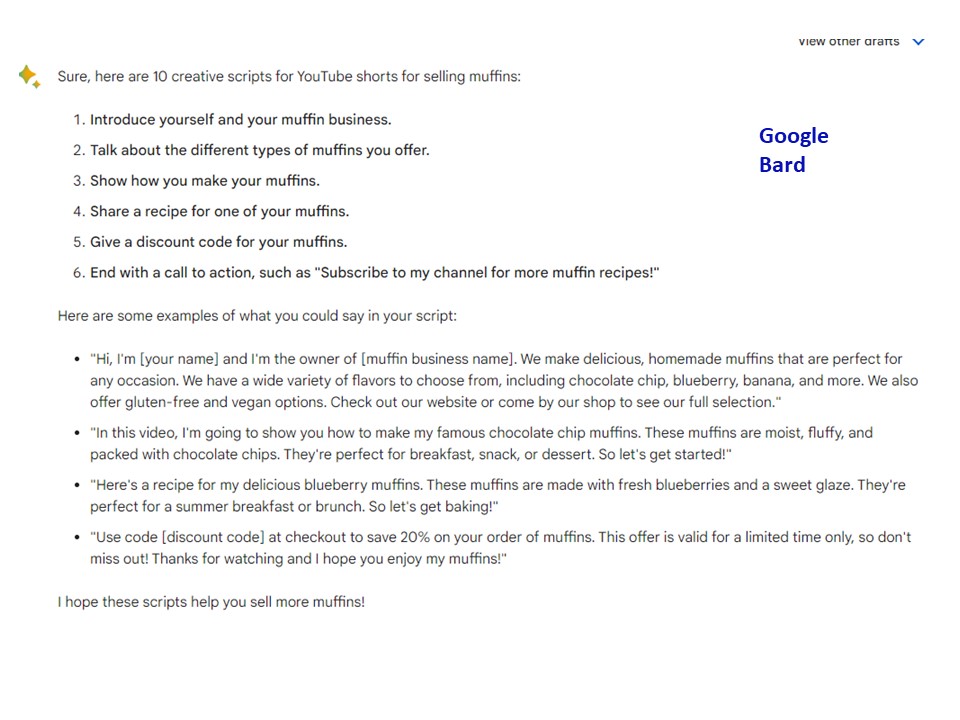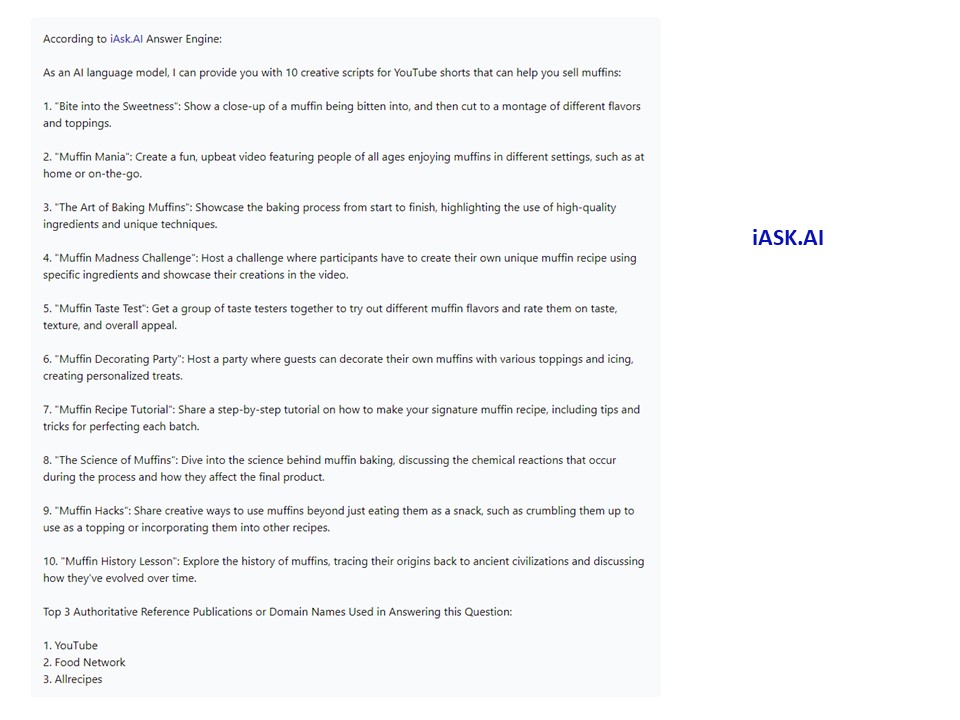Experiments with using AI to Generate Social Media Content
As I continue to go down the AI rabbit hole, I keep seeing suggestions out there for using AI to generate social media content, but I haven’t seen a lot so far giving actual specific examples and testing the existing platforms against each other. I’m sure they’re out there since I started playing with this, but I wanted to give you my personal take and some comments about what I found so far.

I love free stuff, especially for free platforms. While there are a lot of paid options out there, I wanted to try to stick with the free ones just because I work with so many small businesses with very limited marketing budgets, and the last thing I want to do is start suggesting paid platforms when there are just as many good alternatives out there that are free.
There was recently an article on Make Use Of on using Canva to bulk generate images so I gave it a try. This has some pros and cons, for example, if you’re doing quotes if your not really specific about the prompt given. When you ask the AI generator to do quotes, you need to give it some very specific parameters about how to separate the data; otherwise, when you copy and paste it into a spreadsheet, you still have to spend some time separating the text into separate columns.
I found when I first started playing with this option, I asked it to generate quotes about scones, and I didn’t give it specific parameters and then had to spend about 5 minutes separating the columns out from each other, which realistically from a time perspective isn’t a lot but if you were doing a whole lot of these that time can add up, and it doesn’t necessarily become a time saver.
So here are some examples, just as a test of some scone quotes in an Excel sheet uploaded to Canva and then autogenerated into a very basic template for scone social media posts. You can do a lot more with it, and I came out with some more creative things after messing with it for a bit, but again you have to think about the time you’re spending to create the templates first. And then the time to customize them a little bit more so they’re not all identical.

Is this all worth it? I can’t say for sure it is, and I can’t say it’s not. That is only something you need to figure out if that will save you time and what kind of image your business is projecting.
The other questions I had were what else can you use it for? I had seen some suggestions for generating post content, for talking about email content and email subject lines, so I was curious to see what some of the various free AI platforms would generate when prompted when compared with the same prompts side by side.
So the first question I asked and ran through some of the AI platforms was “Write 10 creative email subject lines for selling Muffins“. Now, of the results I came out with from Chat GPT, Google Bard, IASK.AI, and Bing’s AI I found some interesting things.
ChatGPT, for example, spit out some interesting content, but realistically, of the ones that really popped visually/text wise and I think I would put in the category of good open lines (meaning it would entice someone to actually open an email if it landed in their email box) I would say maybe only three of the platforms did well in terms of coming up with decent quality examples.

Google Bard, I think came up with only one or two of them from a consumer’s perspective that would want to make me open an email based purely on the subject line.

IASK.AI spit out pretty much the same thing as Google Bard, none of them were terrible, and a couple of were pretty catchy, but again, based on a consumer opening an email based on the subject line, there’s not enough of a catch in them IMO.

Bing’s AI, I think was the winner of this particular trial. Of course, this is a personal perspective, and I thought it was interesting that they were also putting emojis in the subject line, which can work depending on your target market and your age group. Of all of the content that the AI engines spit out, these had the most of what I will call “carrot opens”, which means if I read this email subject line, there was enough of an incentive in the subject line for me to possibly want to open it.

The next test that I gave some of the AI engines was, “Write 10 creative Instagram posts for selling Muffins”.
Now what I thought was really interesting here was that some of the platforms autogenerated some hashtags, but not nearly enough for Instagram, and a couple added emojis.
What I found the most intriguing about this, though, was there was a big difference between the fact that some of the AI platforms recognized the fact that Instagram also needed a photo attached to it or an image, and it was not just text-based or others did not.
IASK.AI for example gave some emojis, and they gave some hashtags but no photo prompts. Bing’s AI did the same.


Google Bard gave image prompts with short Instagram posts, but they did not give hashtags, and did not include emojis. The emojis were not necessary, but I do think it’s interesting that they did not include hashtags at all.

ChatGPT also gave text for a Instagram post, emojis, some hashtags but no image prompts. (and emojis were before the text compared to some of other platforms).

The last prompt that I gave the AI platforms, at least for the time being, as I continue to mess with the options and with new AI platforms as they come out is “Write 10 creative scripts for Youtube shorts for selling muffins“.
Now a YouTube short is under one minute long, and keep in mind like Instagram, it also needs the visuals, so I was curious to see whether the AI engines would actually give visual prompts, not just scripts.
In Google Bard they gave some suggestions about what you could do with the YouTube shorts and gave some sample scripts but no visual prompts.

I decided to add one of the others I had been testing out that had not prior given decent results in other prompts. Interestingly this one gave some interesting results for this particular test. In Hugging Chat, they gave some script ideas, and they gave titles, and they gave some audio prompts, but they also didn’t give visual prompts.

IASK.AI also gave some interesting results, but it was kind of a mishmash. It gave you some titles like Bite into the Sweetness and Muffin Mania, and then it gave you some visual prompts, but it didn’t give you scripts.

ChatGPT gave off some possible titles of YouTube shorts and gave some visual prompt suggestions, but again no scripts.

Bing’s AI was again almost the winner in this particular prompt in that it gave you an actual script and it gave you a visual prompt. No titles though.

What I deduce from this test, and I know that this is a work in progress as AI platforms gather more data and become more evolved, is that no one platform is going to necessarily spit out everything that you need.
I was interested from a testing perspective to also see how much AI platforms so far have built-in information, like what is needed for particular social platforms. Instagram for example, HAS to have some sort of image, and the text, hashtags, and emojis are kind of useless without one, or not very helpful from a marketing perspective without an idea of what to use “as” an image.
If you take and use the prompts and the ideas from two or three of these platforms simultaneously when you’re running into roadblocks coming up with ideas and creating content, it can certainly generate enough information and ideas.
From a time-saving perspective, I think it can definitly save time and some hair-pulling to come up with new/creative content because it helps you get your brain and your gears working when running into the “Oh Jeez, what do I post next?” which seems to happen to most businesses, sometimes sooner rather than later.
All of the prompts used were simple prompts and while you can get a lot more specific in terms of the ask and what you want generated, I wanted to do this in the context of the average business owner who would not be asking very specific prompts or even know to do that or what to ask in detail.
Curiously on all of the hashtag suggestions there didn’t seem to be any parameters (or data) on whether the hashtag had decent usage at all on a platform, or even if it was used at all. In the case of #MuffinMatchmaker suggested by ChatGPT, not a single hashtag use on Instagram. #MuffinTime on Instagram had 174,103 results, Facebook it had 40K posts and Youtube not a heck of alot unless you count suicidal muffin songs, and that one is not even using the hashtag.
So if your going to use the AI platforms suggestions for Hashtags on any platform, I’d suggest doing some research first on market saturation of the hashtags first and check them for each platform in terms of numbers and marketing weight before you just blindly take them at face value.
My next rabbit hole is to ask AIs to evaluate hashtags and how they are rating and evaluating them (if they even are, and I don’t think so -Yet…..). Google Bard for example suggested some ones for Facebook (in a seperate test) that had less than a thousand posts attached to it, so it looks like they have some work to do, and the majority of the suggestions it spit out for Linkedin as another example, had a big ZERO in terms of usage on the number of posts. Hmmmmm………


